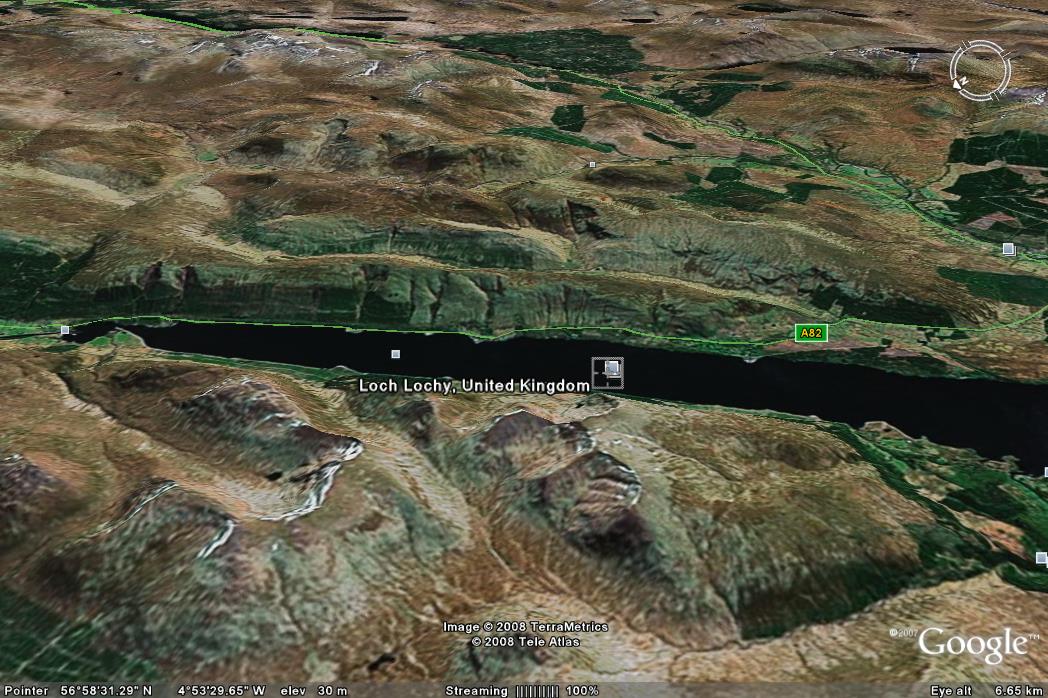5 October 2008
Scottish landslide study
Posted by Dave Petley
August 2004 was unusually wet in, with some areas of the country experiencing three times the long term average rainfall for the month. The most memorable manifestation of that time was a series of landslides that hit the road network. In particular, on 18th August a series of debris flows the hit a main road , the A85, in Glen Ogle. This is widely seen as a pretty near miss as over 50 people were trapped between two landslides and had to be rescued by search and rescue helicopters (see below, image from the Scottish Government).

In the aftermath of that event, Transport Scotland promised to undertake a detailed study of the threats posed to the road network by landslides. Tomorrow (Monday) that report will be published at last. It will be very interesting to see what it says, but the Sunday Herald appears to have leaked the main findings. These are as follows:
- Records suggest there have been about 175 major landslides in Scotland over the last century
- The occurrence is increasing with time (note there are many reasons why this might be the case, or might appear to be the case)
- 380 kilometres of the trunk road network are at high risk of landslides.
- 67 locations have been identified with the highest level of hazard (though it is not clear at present whether this is actually high risk in a global sense)
- The A82, A83, A86, A87 A9 are the roads with the biggest hazards
- Parts of the country’s key trunk roads, such as the A1, A7, A77, M74 and M90, are also at risk.
The highest risk area is apparently the A82, which runs from Glasgow to Inverness via Fort William. Apparently 16 stretches of the A82 were identified as at high risk, with a 13 km stretch along Loch Lochy, north of Fort William, being rated as the most hazardous (see below from Google Earth).

Now, in many ways none of the above is terribly surprising. The most interesting part though is this (quoting from the Sunday Herald article):
“The Transport Scotland report pointed out that major engineering solutions such as re-routing roads or constructing retaining walls were expensive and intrusive. “It is anticipated that relatively few locations would justify this kind of expenditure,” it concluded. Instead, the report suggested that more should be done to improve the public’s awareness of the problem. There should be better road signs, improved weather forecasts and more road closures.”
It will be interesting to see how this plays out tomorrow, and indeed of course what the report actually states. However, my experience is that the public and the media are rarely happy to have an apparently substantial level of hazard pointed out, but the recommendation then being to do little more than make the public aware. This is the point at which the public and/or the media often adopt a zero tolerance to risk. Incidentally, being told there will be more road closures is unlikely to go down well either. Presumably Transport Scotland will manage this rather carefully!


 Dave Petley is the Vice-Chancellor of the University of Hull in the United Kingdom. His blog provides commentary and analysis of landslide events occurring worldwide, including the landslides themselves, latest research, and conferences and meetings.
Dave Petley is the Vice-Chancellor of the University of Hull in the United Kingdom. His blog provides commentary and analysis of landslide events occurring worldwide, including the landslides themselves, latest research, and conferences and meetings.
http://www.transportscotland.gov.uk/road/landslidesIt looks like driving in Scotland after rain will be a whole new set of thinngs to worry about!Benj